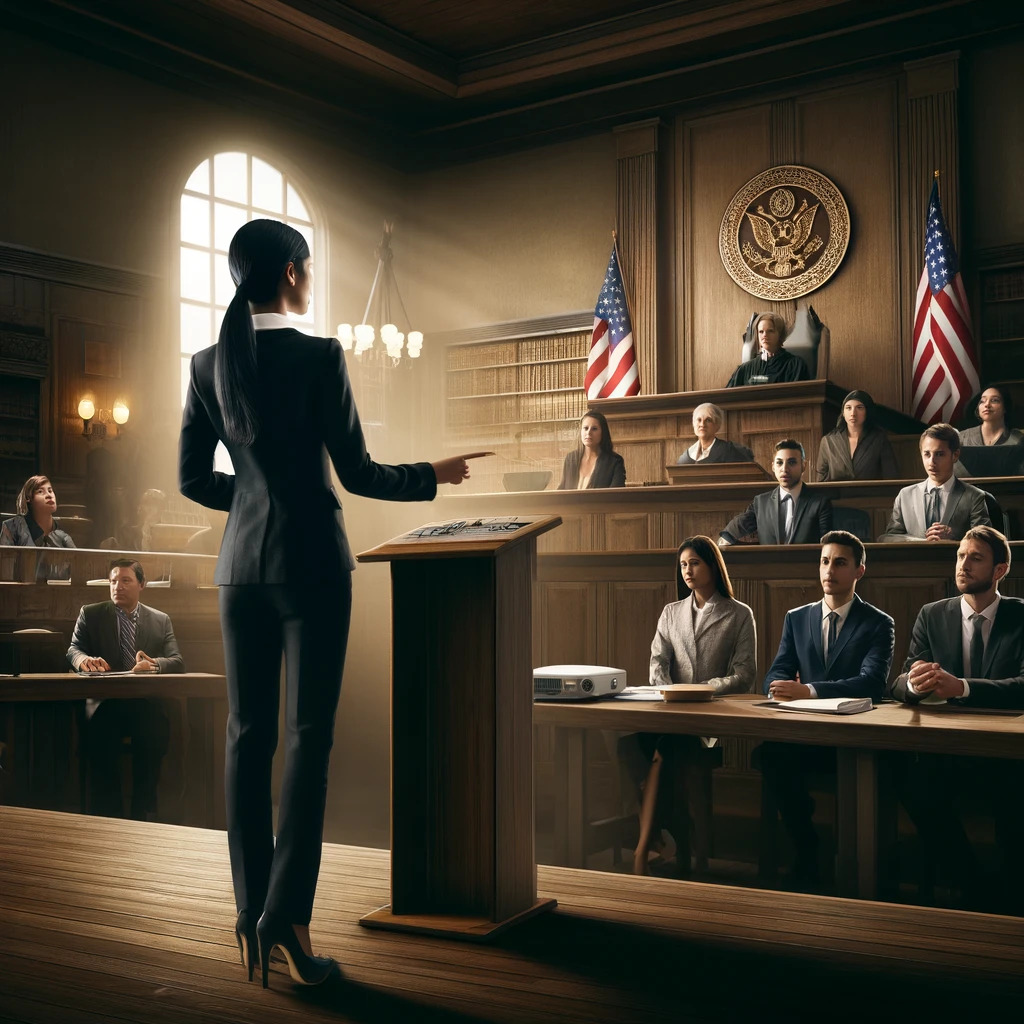Essentials of Personal Injury Law
In examining the essentials of personal injury law, we must focus on the legal constructs of negligence and liability as well as the interpretation of statutes that govern these cases.
Foundations of Negligence and Liability
Negligence is the cornerstone of personal injury law. We identify negligence when an individual fails to exercise reasonable care, resulting in harm to another. In these scenarios, the following elements are essential for establishing negligence:
- Duty of Care: The responsible party had a duty to act reasonably to avoid harming others.
- Breach of Duty: That duty was breached through action or omission.
- Causation: The breach directly caused injuries.
- Damages: The victim suffered identifiable losses as a result.
Legal liability, therefore, hinges on establishing these elements. Personal injury cases often revolve around these facets, as they help determine who is at fault and the extent of their responsibility.
Interpreting Personal Injury Statutes
Personal injury statutes provide the framework within which legal claims are evaluated and processed. Interpretation of these statutes requires careful analysis, paying close attention to:
- Statutory language: Precise definitions and terms used in the law shape how cases are approached and argued.
- Regulations and guidelines: Supplementary regulations may dictate how the statutes are applied in real-world situations.
- Legal precedents: Past court decisions impact the interpretation of personal injury statutes, guiding current and future cases.
This statutory framework, combined with regulations and precedents, effectively shapes the strategy and potential outcomes of personal injury cases. When we interpret these statutes, we ensure our understanding aligns with current legal interpretations and applications.
Role of Legal Representation
Legal representation in personal injury cases significantly impacts case outcomes. Choosing an adept attorney and leveraging experienced legal professionals’ knowledge are key components of this role.
Choosing the Right Personal Injury Attorney
When we seek the right personal injury attorney, we prioritize trust and experience. The selection process should involve:
- Evaluating the track record of the attorney or law firm.
- Assessing the reputation within the legal community and among past clients.
- Confirming their area of expertise aligns with our specific injury case.
Selecting a compatible attorney ensures that our interests are represented zealously in negotiations or at trial.
Benefits of Experienced Legal Professionals
Experienced personal injury lawyers bring a wealth of benefits, such as:
- Strategic Legal Knowledge: They have a thorough understanding of the legal system and personal injury law, which is crucial for navigating the complexities of our case.
- Negotiation Skills: Their ability to negotiate settlements effectively can often result in better compensation without the need for a trial.
- Resource Availability: Established legal professionals have access to necessary resources, including expert witnesses and investigative tools, to build a compelling case.
We rely on experienced personal injury attorneys to guide us through each step, ensuring that we understand the proceedings and are prepared for all possible outcomes.
The Litigation Process
The litigation process in personal injury cases involves a series of legally mandated steps. Our discussion will focus on initiating a lawsuit, the discovery phase, and the culmination at the trial and jury verdicts.
Initiating a Lawsuit
A personal injury case begins when we file a complaint or petition with the court. This document sets forth the factual allegations and the legal claims against the defendant(s). It is essential that the complaint clearly outlines the basis of the lawsuit, which hinges on demonstrating liability and damages incurred due to the defendant’s actions.
Discovery and Documentation
Once the lawsuit is underway, we embark on the discovery process. It’s a critical phase, where each party requests evidence and information from the other side. We utilize various legal procedures such as interrogatories, depositions, and requests for production to gather documentation and statements from witnesses. Both parties aim to develop legal strategies to reinforce their respective positions, relying heavily on the substantiated factual matrix that discovery provides.
| Discovery Tool | Purpose |
|---|---|
| Interrogatories | Gather written information |
| Depositions | Obtain verbal testimonies |
| Requests for Admission | Confirm facts under oath |
| Subpoenas | Compel evidence production |
Trial and Jury Verdicts
The trial is the stage where we present our case before a judge or jury. We meticulously prepare to introduce evidence, adhere to the court’s procedural rules, and strive to persuasively argue our client’s position. Jury verdicts arrive after jurors assess the evidence presented and deliberate on the extent of the defendant’s liability and the plaintiff’s compensation. The trial’s outcome hinges upon how effectively we can convey the merits of our case and the credibility of the evidence brought forth.
Calculating and Negotiating Compensation
When we approach a personal injury case, it’s crucial that we accurately calculate the compensation our client is entitled to, and later utilize effective negotiation tactics with insurers to reach a fair settlement.
Assessing Economic and Non-Economic Damages
We begin by itemizing all the economic damages our client has sustained. This includes:
- Medical bills: Immediate and future medical expenses that stem from the injury. These numbers are generally clear-cut, based on receipts and estimates for future medical care.
- Lost wages: The income the plaintiff lost due to the injury, which can be calculated from salary records and the time away from work.
Aside from tangible economic damages, we must also quantify non-economic damages, which are more subjective and include:
- Pain and suffering: Compensation for physical pain and discomfort resulting from the injury.
- Emotional distress: Money awarded for the anguish and psychological impact of the injury.
We use established formulas and industry standards to estimate a financial value for these non-tangible losses, ensuring we capture the full extent of the recovery necessary for our client’s wellbeing.
Negotiation Tactics with Insurers
During negotiations, it’s our responsibility to advocate for the plaintiff’s best interests. Negotiation tactics are pivotal and can include:
- Presenting the calculated damages firmly and with detail to support our position.
- Countering low settlement offers with evidence of the full impact of the injury on the plaintiff’s life, including ongoing medical care requirements.
We maintain open lines of communication with insurers, yet we’re prepared to proceed to trial if a fair compensation offer isn’t forthcoming. Throughout negotiations, we always aim for a settlement that fully acknowledges the hardships our client has faced due to their injury.
Impact of Technology on Personal Injury Cases
In the realm of personal injury law, advancements in technology have revolutionized how cases are prepared and presented in court. We’ve seen a significant improvement in the efficiency and accuracy of case outcomes.
Incorporating AI and Data Analysis
The use of Artificial Intelligence (AI) has greatly enhanced our capability to analyze large volumes of data with exceptional accuracy. By deploying AI algorithms, we can now uncover patterns and insights that were previously unattainable. For instance, when assessing the long-term impact of injuries, AI can evaluate data from various sources to accurately predict future medical needs and the associated costs. This level of detail supports our pursuit of fair compensation for clients.
- AI in Predictive Analysis:
- Efficiency: AI algorithms process data faster than traditional methods, saving time in case preparation.
- Accuracy: Predictions about medical outcomes are more precise, leading to fairer settlements.
Technology in Evidence Gathering
Evidence gathering has been transformed with the advent of technology. We now frequently utilize social media platforms to collect relevant information that can influence the outcome of a case. This can include photos, videos, and posts that establish a timeline or contradict a defendant’s claim.
- Social Media as Evidence:
- Photos and videos from profiles can demonstrate the plaintiff’s physical condition over time.
- Posts can corroborate or refute eyewitness accounts.
Augmented reality (AR) is another technological tool that’s beginning to make an impact in courtrooms. With AR, we can create immersive reconstructions of events to provide juries with a more concrete understanding of an incident. This can be particularly compelling when trying to convey complex details that are difficult to visualize.
- Augmented Reality in the Courtroom:
- Visualization: Simulations can offer a clear depiction of the plaintiff’s experience.
- Engagement: Jurors gain a more interactive and engaging way to grasp the facts of the case.
The embrace of these technologies aids in presenting the most cogent arguments to ensure justice for our clients. With continued advancements, we anticipate even greater enhancements to the practice of personal injury law.
Frequently Asked Questions
When it comes to navigating personal injury cases, we understand the complexities involved. Our aim is to shed light on the critical role of legal representation and how it may affect case outcomes.
What are the benefits of hiring a personal injury attorney?
Enlisting a personal injury attorney typically grants access to specialized legal expertise and advocacy. This expertise often translates into stronger case presentations and more favorable outcomes.
How does a lawyer’s expertise influence the outcome of a personal injury lawsuit?
A lawyer’s understanding of legal procedures and experience in personal injury law can greatly influence case strategy. This knowledge is vital in identifying and presenting evidence that can be pivotal in obtaining a successful verdict or settlement.
Are individuals who represent themselves at a disadvantage in personal injury cases?
Self-represented individuals may lack the legal knowledge needed to effectively navigate the complexities of personal injury law, putting them at a potential disadvantage when facing seasoned defense attorneys.
What role does an attorney play in negotiating personal injury settlements?
Personal injury attorneys are skilled negotiators who leverage their experience and legal acumen to argue for fair settlements. Their ability to present a compelling case can profoundly impact the compensation offered in negotiations.
Can the absence of an attorney impact the compensation received in a personal injury case?
Without an attorney, plaintiffs may find it challenging to accurately assess and articulate their claim’s value, potentially leading to under-compensation. An attorney’s guidance is crucial in valuing claims and ensuring equitable compensation.
Is it necessary to have a lawyer for small personal injury claims or can they be self-represented?
While it is possible to self-represent in small claims court, having a lawyer can still be beneficial. Attorneys can offer valuable advice, even for small claims, ensuring that all damages are duly considered and pursued.




